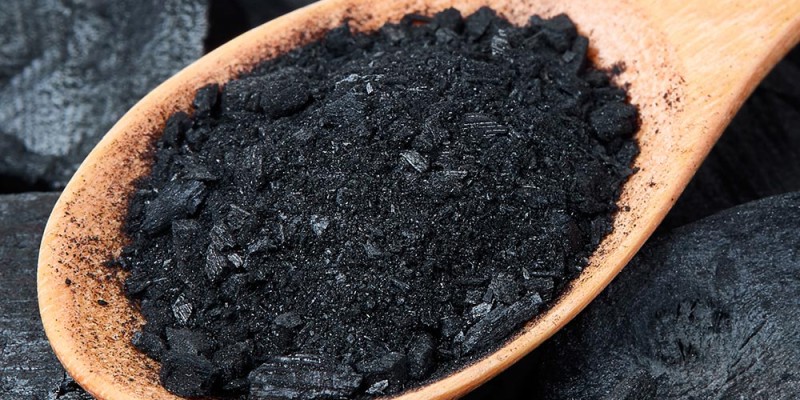Last time we spoke about the Brix Meter or refractometer and discussed how it is likely not the best to measure the nutrient density of the produce in our gardens. http://youtu.be/YO4L_jSxsAc In that video I told you I was going to try to answer some of your questions about the trials.
Today we are going to take a look at some of the Soil results. In order to help us out we asked a few professionals for their input reading the results. What follows is the combined analysis based on the professional consensus.
In order to take the samples we selected the same location in each bed, removed the mulch layer and took approximately the same volume of soil. After labeling clearly which bed we took the samples from we put them in a cooler and brought them right to the lab. I would like to take the time to give a special thanks to Maxxam Analytical Laboratories for assisting in not only running the samples but analyzing the results.
On our videos summarizing this year’s total harvest we have had a few people asking about the pH of the soils to help explain the results this year. If you would like to see the results click here now. pH is a scale that defines how acidic or basic the soil is. The university of Vermont reports the optimal pH for plant growth is between 5.5 and 6.5 when both the beneficial bacteria are operating at peak efficiency and nutrients are most available to the plants roots.
Question Is the pH being impacted by these products causing the unbalanced harvests?
Your right pH imbalances can have huge impacts on plant health and vitality. Too acidic or alkaline and the plants don’t grow optimally. So we tested the soils pH as a part of the analysis.
The pH of the control was slightly more acidic at 5.91, Rock Dust was 6.0 and biochar 6.17
What does this mean? The pH of all trial beds are well with the optimal range for plant growth. These are very slight difference in pH between each bed is not statistically significantly and should not impact the growth and harvest of any of these plants.
pH has a strong effect on the nutrient availability in soil. The pH of the trial beds are all right in the optimal range for beneficial microorganism function and nutrient availability and should not be impacting it negatively.
Speaking of nutrient availability a number of people have asked if Rock Dust and Biochar may impact it in the soil. Nutrients have to be in a form the plants can take up and use. Plants acquire most of their nutrients from the soil with the exception of Carbon Dioxide. Generally speaking the nutrients plants need in large volumes of Nitrogen Phosphorus and Potassium or NPK.
Question 2 Do these amendments impact the nutrient availability in the soil?
Nutrient imbalances and deficiencies can have disastrous impacts on both plant health and production.
We had the bioavailable Nitrogen, Phosphorus and Potassium measured and these are some very interesting results!
Nitrogen is typically available in two forms. N03- Nitrate and NO2- Nitrite. Nitrogen is an essential building block for amino acids and nucleic acids providing the building blocks for your cells and the core of DNA.
• Nitrate availability for the control was measured at <0.50 mg/kg or parts per million. This reading is below the Reportable Detection Limit of the analysis The Rock Dust is also below the detection limit. The Biochar had a reading of 11ppm • Nitrite availability in the control was 1.4 ppm and biochar 1.3ppm which was significantly lower then the Rock Dust at 9.7ppm The combined Nitrogen availability had the control at 1.4ppm Rock Dust at 9.7ppm and Biochar on top with 12ppm We can postulate that amendments has statistically more Nitrogen quantities in the soil when compared against the control. The general rule of thumb to determine if the difference is statistically relevant is if the result and change are more then 10x the detection limit. The increase in nitrogen in the rock dust bed is difficult to explain as the product does not claim to have significant volumes. In the biochar bed we likely can explain the increase in nitrogen as a result of the products ability to hold nutrients and prevent them from leaching. Further analysis is required to understand how the amendments increase the nitrogen availability in the soil. Phosphorus plays a big role in the formation of DNA and RNA in all living organisms on Earth. DNA and RNA are the key molecules your genes. Phosphorus is also the key element in all cellular energy. It forms Adenosine Triphosphate (ATP) that is the cells power transfer molecule. The bioavailable Phosphorus in the soil had the following results: control had 920 ppm, Rock Dust had 1/3 of that at 300 ppm while biochar had the most at 1400 ppm. The total metals assessment allows us to take a look at both the bioavailable and unavailable in the soil. The same trend was observed with Rock Dust measuring in at 2600ppm , Control 10,000ppm and bio char at 16,000 ppm. We can use the control as the starting point for phosphorus concentrations. Something in the rock is allowing the soil concentrations of phosphorus to decline at an accelerated rate. This can either be through absorption into the plant or more likely through leaching as both the bioavailable and unavailable concentrations are significantly lower than the control. Biochar product claims include the ability to hold nutrients in place slowing leaching from the soil. The control does not have the amendment allowing slow leaching over time. This would explain why the combine phosphorus concentrations were higher in the biochar bed than the control. The future analysis of the tissue will let us know if in the rock dust bed the phosphorus is being absorbed into the fruiting body or leaving the soil another way. Absorption into the plant would not tell us where the unavailable phosphorus is going. Potassium is also known as potash is an extremely important element in all living organisms. It is key in intercellular transport. Without potassium in concert with sodium we would be unable to move most things in and out of our cells. Plants require potassium for protein synthesis and opening and opening and closing of the stoma which allow for transpiration of the leaves. It is even known to play a key role in photosynthesis. The control came in at 1800ppm and biochar at 1700ppm while rock dust had less than half of the concentration at 820 ppm. The total metals results have the rock dust being the lowest at 2300 ppm control at 2700 ppm and biochar at 3200 ppm, which are not statistically significant differences. What does this mean? Something is taking up the bioavailable potassium while leaving the unavailable. This could be explained by the plants being able to take it up. The tissue analysis will give us a better picture. In summary the soils pH looks to be a non-issue and the available nitrogen seems to favor the amendments beds. However, the Rock Dust’s lower Potassium and Phosphorus may result in ongoing issues for healthy plant growth. Biochar seems to have the best balance of pH and Nutrient availability when compared to the Control and Rock Dust Soil results. On the next Home Garden Field Trial Episode we are going to go through the total metals assessments for both the soil and crop. The analysis should give us a good idea if there are differences in the trace minerals in the soil and plant tissue and might explain some of the results presented today. Following the next analysis video we will compile all of the participants harvest results for the trials first year. If you have missed any of the Home Garden Field Trial episodes and would like to catch up the link on screen will bring you to the playlist. Thank you for spending time with me today. I appreciate it very much. I hope you have a fantastic Day!!! Reference material Optimal Plant pH http://pss.uvm.edu/ppp/pubs/oh34.htm pH impact on nutrient availability and nutrient availability http://en.wikipedia.org/wiki/Soil#Nutrients Nitrate http://en.wikipedia.org/wiki/Nitrate Nitrite http://en.wikipedia.org/wiki/Nitrite Role of Nitrogen http://en.wikipedia.org/wiki/Nitrogen Role of Phosphorus http://en.wikipedia.org/wiki/Phosphorus Role of Potassium http://en.wikipedia.org/wiki/Potassium_in_biology Sodium Potassium Pump http://en.wikipedia.org/wiki/Na%2B/K%2B-ATPase Nitrogen Deficiency http://en.wikipedia.org/wiki/Nitrogen_deficiency Phosphorus Deficiency http://en.wikipedia.org/wiki/Phosphorus_deficiency Potassium Deficiency http://en.wikipedia.org/wiki/Potassium_deficiency_(plants)






